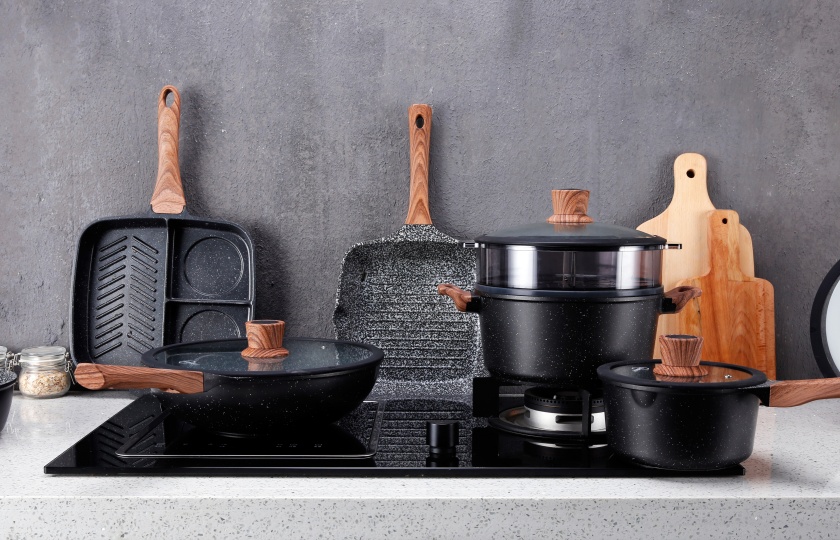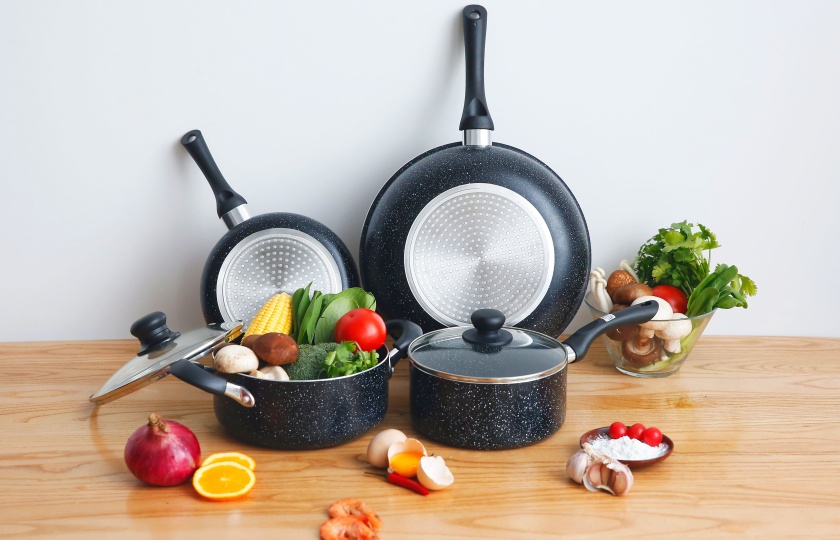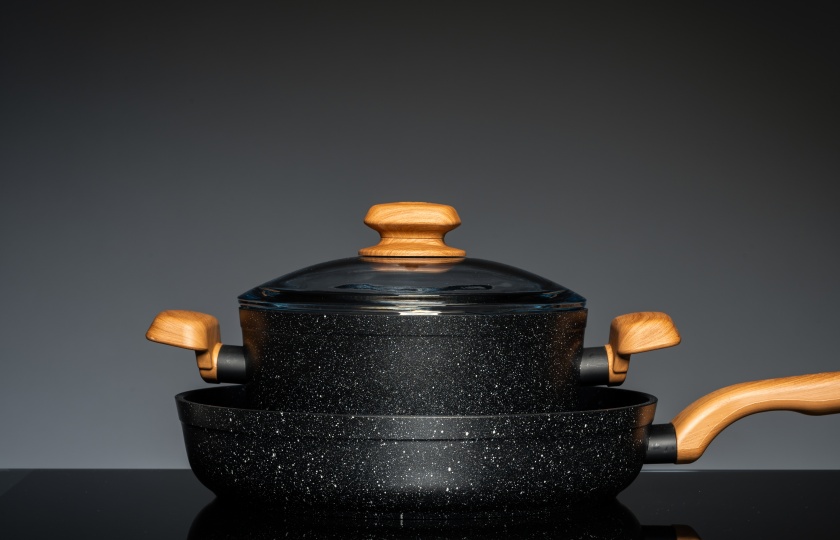Optimal Positioning: Where Should Handles of Pots Be When Cooking

In daily kitchen cooking operations, pot handles may seem insignificant, but their placement is of great significance and is related to the convenience and safety of cooking, worthy of our close attention.
In which direction should the handles of pots be placed for safer cooking?
When cooking, it is safer to place the pot handle towards the inside or side of the stove. This can avoid tipping over the pot by accidentally touching the handle. This is especially necessary when there are children at home or people often pass through the kitchen.
When using multiple pots, the positions of the handles should be staggered to avoid interfering with each other. If it is a pot with a long handle, don't let the handle extend outside the countertop, otherwise it is easy to be bumped into or knocked over.
For gas stoves, the handle should be kept away from the flame to prevent the handle from overheating. For induction cookers, it is necessary to pay attention to keeping the handle away from other heating areas to avoid affecting use.
Developing good habits is very important. Every time before using a pot, confirm whether the handle position is safe. After using it, adjust it to a safe position in time. This can effectively prevent accidents.
How high should the handles of pots be for convenient operation when cooking?
Under normal circumstances, the most suitable height for the handles of pots is 25 to 30 centimeters above the stove countertop. At this height, the elbow can bend naturally and it is the least laborious to exert force.
From the perspective of usage experience, the height of the handle is related to height. For people around 165 centimeters tall, a handle height of about 28 centimeters will be more comfortable to use. If you often toss the pan when stir-frying, a slightly lower handle, about 25 centimeters, is easier to exert force.
Safety also needs to be considered. If the handle is too high, it is easy to hit the range hood. If it is too low, it is not easy to control the heat. If you need to quickly turn over the food when stir-frying, a suitable height can make the operation more smooth and natural.

How to quickly cool down the handles of pots which are very hot after cooking?
To quickly cool down the very hot pot handle after cooking, directly rinse the handle part with cold water. After rinsing for 1 to 2 minutes, the temperature can drop to a touchable level.
If you are afraid that a large temperature difference is not good for the pot, then wrap the handle with a wet towel and wait for 3 to 5 minutes to let the temperature slowly drop. It is better to choose a towel made of pure cotton material, which has good water absorption and is high temperature resistant.
What material of the handles of pots is more comfortable to use?
Silicone handle is the most comfortable choice. It has a soft feel and is anti-slip. Even when wet, it can be firmly grasped. Moreover, it has low thermal conductivity and will not burn your hand.
Wooden handles are also very popular. The natural material has a warm grip and is neither too cold nor too hot, suitable for long-term use. However, pay attention to waterproofing and mildew prevention. Wipe it dry in time after use.
Plastic handles are affordable and lightweight, but their heat resistance is average. They are prone to deformation and fading after long-term use. Although metal handles are strong and durable, they have strong thermal conductivity and are easy to burn your hand. When used in winter, the feel is cold.
From a practical perspective, choosing pots with silicone or wooden handles is more suitable for daily cooking and can make cooking easier and more enjoyable. If the budget is sufficient, you can choose pots equipped with dual-material handles, which not only ensure the feel but also take durability into consideration.

Why are some handles of pots long and some short?
Pot handles are long or short mainly depending on the usage scenario and functional requirements.
Long handles are generally used on frying pans and skillets. In this way, users can be at a safe distance from the stove. When stir-frying and tossing the pan, it is more labor-saving. However, long handles take up space, are troublesome to store, and are easy to bump into surrounding objects.
Short handles are commonly found on soup pots and casseroles. These types of pots are heavy and hold a lot of things. With a short handle and an additional side handle, they are more stable and safe to use. Moreover, short handles are easy to store and are not restricted when placed in the oven.
Professional kitchens will choose pots with different handle lengths according to cooking methods. Home kitchens need to consider the size of the space and the frequency of use. If you often stir-fry or stir-fry with high heat, a pot with a long handle is suitable; if you mainly cook soup and stew, then a short handle is more practical.
What should I do if the cooking pot handle is broken?
If the handle of the frying pan is broken, there are several solutions. If the situation is not serious, the simplest way is to buy a handle cover and put it on directly. If the wooden or plastic handle is loose, use a screwdriver to tighten the fixing screws.
If the handle is completely broken or detached, it is safer to directly replace it with a new pan. Although you can find a repair shop to weld it, the strength and safety of the welded handle are not as good as a new one, and the repair cost may not be much different from the price of buying a new pan.























